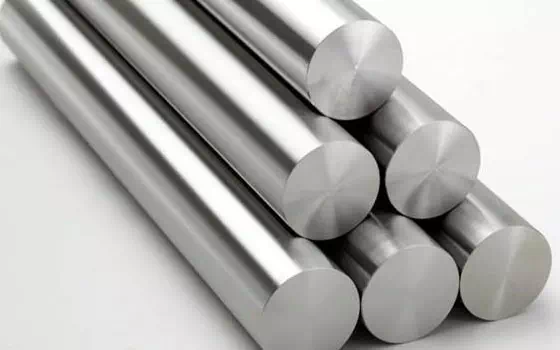Welcome to Zhishang Steel Co., Ltd.
TEL: (Gavin) +86-15665898999 | Email : info@zhishangsteel.com
Location:Home>>News>>Company News » Stainless steel performance in all aspects

1. Corrosion resistance is reduced due to damage or pollution
Where the film has been damaged and other forms of contamination are present, the natural re-formation of the passivated film is prevented and corrosion may therefore occur. All the beneficial properties of stainless steel can be destroyed during processing, such as heat treatment or mechanical processing such as welding, cutting, sawing, drilling and bending. As a result of these treatments, the oxide protective film on the surface of stainless steel is usually damaged or contaminated, and it is impossible to achieve spontaneous and complete passivation. As a result, local corrosion may occur and rust may occur even under relatively weak corrosion conditions. When used, it can result in an unsatisfactory end product, or even worse, a critical system failure.
A: Welding causes acceleration of oxidation both inside and outside the weld and near the weld. Because there are discolored areas where oxidation can be seen, the color is related to the thickness of the oxide layer. Compared with the oxide layer on the stainless steel before welding, the oxide layer in the discolored zone is relatively thick, and the composition is changed (chromium is reduced), so that the resistance to local corrosion is reduced. For the inside of the tube, oxidation and discoloration can be minimized by using an appropriate backblowing method. After welding, post-welding treatments such as pickling and grinding are often necessary to remove the oxide layer (colored) and re-establish corrosion resistance. A color diagram is often used to determine whether the weld needs pickling according to the grade of color. However, this decision is subjective, and in principle each color indicates the presence of oxidation and the affected oxide layer, thus reducing corrosion resistance.
B: Mechanical treatment usually uses mechanical or non-mechanical contaminated surfaces. Organic contaminants may be caused by lubricating oil. Inorganic contaminants such as foreign iron particles can be caused by contact with tools. Often all kinds of surface contamination can cause plaque. In addition, foreign iron particles may cause electrochemical corrosion. Both plaque and electrochemical corrosion are localized forms of corrosion that initially require water treatment. Therefore, surface contamination usually reduces the corrosion resistance of stainless steel.
2. Surface treatment
In order to treat the surface, remove discoloration and re-restore corrosion resistance, there are now many rear treatments and means. Here again we should distinguish between chemical and mechanical methods. Chemical methods are: pickling (by immersion, with pickling paste or spray), auxiliary passivation (after pickling) and electrolytic polishing. Mechanical methods include: sandblasting, shot blasting with glass or ceramic particles, annihilation, scrubbing and polishing.
While all methods can produce a welded seam, none of the mechanical rear treatments will provide corrosion properties suitable for demanding applications. Chemical methods are used to remove oxides and other contaminants from the surface, while mechanical methods have the potential to wipe away contamination caused by previously removed, polished or annihilated materials. All kinds of pollution, especially foreign iron particles, can be a source of corrosion, especially in humid environments. Therefore, the mechanical cleaning surface should preferably be cleaned under dry conditions.
After pickling, it is important to properly rinse with water in order to remove all contaminants and pickling residues. Final flushing should be carried out with softened water to avoid calcium stains and contaminants embedding in the increasing oxide layer, which is necessary to build up the passivation layer. In addition, corrosion resistance is improved due to the use of chemical methods (pickling and electrolytic polishing), so iron dissolves faster in the pickling solution and electrolyte than other metals, according to which the surface is enriched with chromium and becomes more inert. Therefore, chemical methods such as pickling and electrolytic polishing are the only post-treatment methods that can restore the corrosion resistance of stainless steel in welds and other surface damage that occurs prior to welding. This is actually independent of the type of stainless steel, there is no difference in effect between pickling by immersion in the tank or using pickling paste or spray.

Zhishang Steel has always been a pioneer in custom steel and special supplies, and has been recognized for its efforts in enhancing work efficiency and product quality. In addition to ISO9001:2015 certification, we also adhere to strict quality policies and proprietary procedures. If you have any questions, please contact us to provide the best type of product solution for your pre-painted, coil coating metal process, we will closely support after-sales service to ensure that your subsequent problems can be solved in a timely manner, if you have any questions, please send email to info@zhishangsteel.com, we look forward to serving you.

Zhishang Steel, specializing in domestic steel products trade, warehousing, processing and other services. The team has four service teams: Shandong Zhishang Steel Co., LTD., Shandong Zhiyiheng Trading Co., LTD., Tai 'an Zhishang Economic and Trade Co., LTD., Shandong Zhishang Steel Structure Co., LTD. Mainly engaged in steel coil, coated, stee···